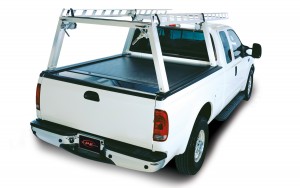Cal-State is licensed insurance broker that can assist you in obtaining all of your insurance in one stop listed below are some of the insurance programs we can offer.
[hr]
Workers Compensation
[two_thirds_last]
- It is easy to buy. After a four-minute conversation with an insurance broker, you’ll be far down the road to having your own policy.
- It is easy to control its cost. Because the rate is based on your payroll figures.
- It is easy to factor in the cost of Work Comp into your bid.
Policies are written for one full year. So if you think you won’t be hiring any employees for the rest of the policy period, there will be no extra charges added for payroll beyond the minimum premium as stated in the policy.
The final premium is based on your final payroll figures. The number of employees is not important. Many contractors, like roofers, have seasonal busy periods, then times when there is less of a need for employees. At the policy conclusion you’ll pay the same for having one regular employee when the payroll comes to $10,000, or if you have no payroll until the last day then hire thirty guys for one day and that day’s payroll comes to $10,000. (Assuming everything else is similar.)
The premium quoted to you is for an annual policy, but it is only an estimate. Look, first, at the rate being charged per classification (or vocation) like roofing, finish carpentry, plumbing, etc. To fairly compare different proposals the total premium is based on your estimate of total payroll. So the estimated total is nothing more than a guess of what your final bill might look like.
Rates are stated for each separate vocational class. The rate can change dramatically if your employees are paid more than a certain rate (usually around $19 -$21 per hour.) Sometimes payroll can be structured to take this into account.
The best time to change to a different company is at its anniversary date, the expiration date shown on the policy. It is a complicated and costly procedure to properly cancel a policy in the middle of its annual term.
Every year you should request a loss analysis statement to substantiate your record to any possible new insurer. It is an essential part of good record-keeping. The longer you maintain a record of few or no losses (without a gap of time being uninsured) you will find lower and lower workers compensation premiums being offered to you. The companies look at those numbers very closely. Look to see if you qualify for a safety group. Most carriers have special programs for certain classes of workers.
[/two_thirds_last]
[hr]
General Liability
[two_thirds_last]
While it is important to have liability insurance, there is no legal amount of coverage you must have to operate within the legal guidelines of your license as a contractor. If you do residential work your customers are less likely to ask for proof of insurance than if you deal with more savvy commercial clients.
No penalty for underestimating at the time your estimated premium is quoted. You’ll pay based on the minimum premium stated when you buy the policy, increased by payroll or gross receipts you report at each audit period.
The annual premium can be based on either payroll or gross receipts. If the premium is based on payroll the company will consider any payroll you have pay to a payroll service. If your rate is based on gross receipts the company considers a total of everything, including subcontracted costs, material, etc. The final price is subject to audit. The company can readjust the final price if your gross receipts or payroll have changed from your initial estimate.
Most common types of coverage written in California are:
FULL OCCURRENCE
Under the full occurrence form you have coverage for claims which occur during the policy coverage period yet may not be discovered for years later.
MODIFIED OCCURRENCE and CLAIMS MADE.
Under Claims Made, the policy will cover you for claims reported during the specified time limit defined in the policy. Usually the policy will exclude coverage for events, which occurred prior to policy inception. You have a limited time after the conclusion of the policy to purchase “tail-on” coverage, which will extend the reporting period for another year.
[/two_thirds_last]
[hr]
Commercial Auto
[two_thirds_last]
Limit of liability you must have to satisfy State law is sometimes regulated by vehicle weight. If the gross weight exceeds 10,000 lbs then you must carry at least $750,000 of coverage per occurrence in California.
A company prefers (or may insist) that you carry commercial (rather than personal) coverage on a vehicle, especially if any of the following is true:
- The vehicle is EVER driven by employees.
- You have signs on the vehicle
- You EVER have an employee in the vehicle.
- You require a certificate of insurance showing that you have commercial coverage for your vehicle.
- The primary use of the vehicle is for commercial purposes.
- The vehicle is not normally used as a personal vehicle (e.g. a dump truck)
- The vehicle is very heavy and not considered a personal or recreational vehicle.
Why Do You Need Commercial Vehicle Coverage? It will pay your legal liability if you hurt someone or damaged/destroyed some of their property with your commercial vehicle.
Which is better, Split Limit or Combined Single Limit? Some people prefer the combined limit because an accident could be a case of your liability for only damaged property, or only bodily injury, but just to one person. You only have one limit (not three) to be concerned with. Split limit coverage is usually cheaper to purchase.
UM is a common abbreviation for Uninsured Motorists Coverage. It will pay to you and passengers in your car, for medical injuries and other associated financial losses in the event any of you are injured, the accident was the fault of another and that person was “hit and run” or just had no insurance.
Comprehensive An insurance term to mean just about anything except a crash (and that would be collision coverage). It includes potential losses like falling aircraft, flood, theft of the car, vandalism…It is a very comprehensive list.
Click here to request more information for commercial auto insurance
[/two_thirds_last]


